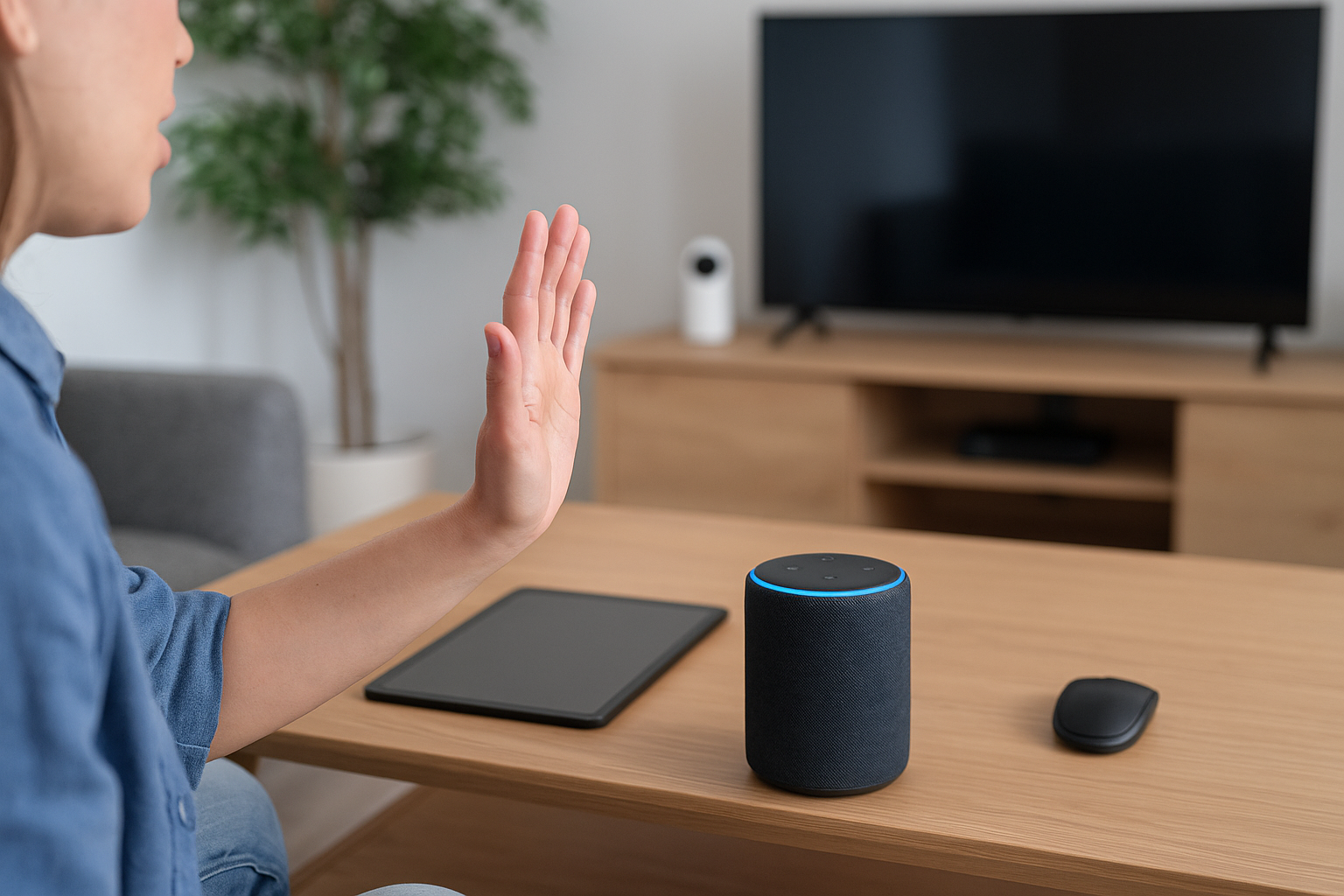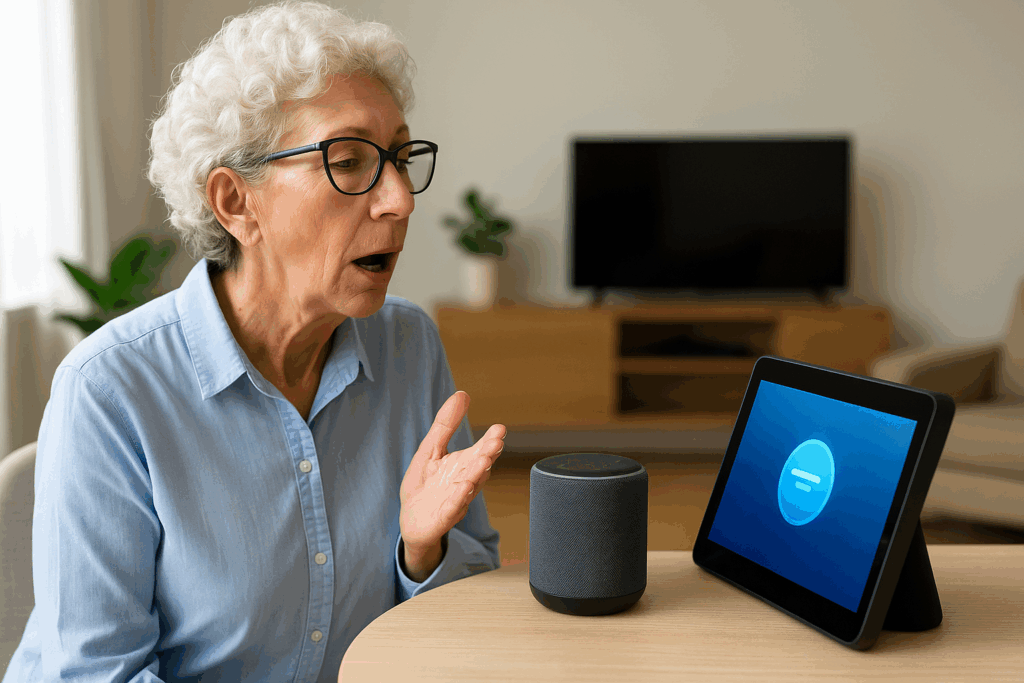
Have you ever tried using your voice assistant to check your schedule in a busy café, only to have the noise drown out your words so you end up tapping the screen instead?
Moments like this show a flaw in many digital experiences because most apps and devices treat voice, touch, and gestures as completely separate features.
What people really want is to switch between different ways of controlling their devices without having to restart everything. The good news is that multimodal interface design can fix this problem. How? That’s what we’ll discuss in this article.
We’ll also look at how to design these better interfaces, the technology that makes them work, and how future interaction models will make our daily digital experiences much smoother and more natural.
But first, let’s get into what multimodal interfaces mean.
Multimodal interface design means creating systems that accept and respond to more than one type of user input, such as voice, touch, gesture, and haptics, and often provide multiple types of feedback, like visual, auditory, or tactile cues.
The idea is to make technology feel more like interacting with a real person. Instead of forcing you to learn complicated commands, these systems understand multiple ways you naturally want to communicate.
Think about how you interact with friends. You might speak to them, point at things, touch their arm to get attention, or make facial expressions. A multimodal interface design does something similar. It accepts voice, gestures, touch, vibrations you can feel, and even where you’re looking.
You can already see this happening in real products.
Meta’s new Orion glasses let you talk to them while also using your hands to control what you see. Modern cars work the same way. You can tell the car to turn up the heat, tap the screen to change directions, or wave your hand to adjust the radio volume.
Now, here’s why this matters for that café problem we mentioned earlier. When background noise makes voice commands impossible, you can simply switch to touching or gesturing instead. The smart part is that the device doesn’t make you repeat everything. It remembers what you were trying to do and picks up right where you left off.
But why does mixing different input methods work so much better than sticking to just one? We’ll answer that next.

The problem with relying on just one way to control your devices is that it’s bound to fail you when you need it most.
Voice commands stop working when you’re in a noisy environment or have a scratchy throat. Gestures can be fun at first, but they can quickly become tedious when you have to remember what each one is supposed to do. And touch screens become useless when your hands are wet or you’re wearing thick winter gloves.
All of these challenges point to the need for a hybrid user input system. Here’s how these systems give you several different ways to do the same thing.
Think of hybrid input like having multiple ways to get to work. If the main road is blocked, you can take side streets. When voice recognition fails because of background noise, you can simply switch to gestures or touch instead. Research shows that having these backup options makes people way less frustrated and helps them finish tasks much faster.
The really clever part is that modern systems can figure out which input method works best in your current situation. If there’s too much noise for voice commands, the device automatically becomes more responsive to gestures or touch. You don’t have to manually switch modes.
Combining different input methods often makes everything quicker. You might say “show me photos” and then use hand gestures to flip through them. This feels more natural than doing everything with just one method, and it usually takes fewer steps to get what you want.
Hospitals are leading the way here. Surgeons can now talk to adjust the operating room lights whilst using hand movements to scroll through X-rays, all without touching anything that might spread germs.
Smartwatches do something similar by combining gentle vibrations on your wrist with voice alerts, so you know when to give your voice a rest during long phone calls.
Of course, making all these different input methods work together smoothly isn’t as simple as it sounds. Let’s have a look at some real technical hurdles that designers and engineers need to overcome to make future interaction models work in the real world.

Building these smart hybrid systems is complex. Developers face some serious technical hurdles that can make or break the user experience, like:
The biggest headache is getting all the different sensors to work together in real time. Voice recognition might take 200 milliseconds, whilst gesture tracking takes 50 milliseconds.
When you combine these timings, users notice the lag between their action and the system’s response. So, synchronisation algorithms now use advanced techniques like dynamic time warping to align these different speeds.
Next is the challenge of handling conflicting inputs. What happens when you accidentally wave your hand around while you’re trying to give a voice command? The system needs to be smart enough to figure out what you actually meant to do.
That’s why the best systems nowadays can look at your situation and decide which input makes the most sense. For example, if you’re in a loud room, the system will pay more attention to your gestures than your voice.
Getting everything to work across different devices and platforms is another major challenge. Your hand gestures might work perfectly on your phone, but completely fail when you try to use them with your computer or smart TV. This happens because different devices have different hardware and software, which can make things incompatible.
Fortunately, engineers are developing clever solutions to tackle these problems:
Smart systems now use algorithms that automatically decide which input method to trust based on the situation. In a noisy room, the system gives more weight to gestures and touch rather than potentially garbled voice commands.
Next, the new AI systems can predict when you’re likely to switch from one input method to another. They get ready for the switch before you even make it, which makes everything feel much more responsive.
Finally, organizations like the W3C have created standard rules that help developers build systems that work the same way across different devices. It’s like having a common language that all multimodal systems can understand, no matter what device they’re running on.
All of these technical solutions are impressive, but they still leave out a crucial question: what about people who can’t use some of these input methods at all?

Most discussions about multimodal interfaces sound impressive, but there’s a big gap between talking about inclusivity and actually making it happen. Too many developers treat accessibility as an afterthought rather than a core design principle.
The problem is that inclusivity gets discussed in theory but rarely gets put into practice properly. Many systems claim to be “accessible” because they have multiple input options, but they don’t actually test whether people with different abilities can use them effectively.
This is particularly frustrating because multimodal interfaces have huge potential to help people with disabilities. When done right, they can open up technology to users who previously struggled with traditional interfaces.
Fortunately, some developers are getting this right. Take, for example, systems designed for people who are deaf or hard of hearing. The best ones also show clear visual feedback on screen when they understand what you’ve said. So, even if someone can’t hear the system’s audio response, they can see exactly what’s happening.
For people who are blind or have low vision, smart systems combine gesture controls with detailed vibrations. Instead of just giving you a generic buzz, these interfaces use different vibration patterns to “draw” shapes on your wrist or guide you in specific directions. Research shows this combination actually helps people understand digital layouts much better.
The smartest approach is simply letting users pick what works best for them. Some people prefer combining voice commands with vibrations, while others like gestures paired with visual feedback. The best systems learn these preferences over time and automatically adjust to match.
But cultural differences matter too. Hand gestures that feel completely natural in one country might seem weird or even rude in another. Any good multimodal system needs to take these cultural differences into account and adapt accordingly.
Ultimately, the systems that actually work are tested with real users from different backgrounds and with different abilities to understand how people want to interact with technology.
Unfortunately, many companies still skip this crucial step. That’s why we end up with systems that work perfectly for the engineers who built them but fall apart when real people with diverse needs try to use them.
As multimodal interfaces become more common, they’re creating some serious privacy and security headaches that most people don’t even realise exist yet.
When your device starts collecting your voice patterns, facial features, and gesture habits, it’s essentially building a detailed biometric profile of you, and that has people worried.
The biggest worry is that multimodal systems store incredibly personal data. Your voice has unique patterns that work like a fingerprint, and your hand movements create distinctive signatures that can identify you.
If this data gets stolen or misused, the consequences are much worse than losing a password. You can’t exactly change your voice or the way you naturally gesture.
Voice spoofing is becoming a genuine threat. Criminals can now use AI to copy someone’s voice from just a few seconds of recording and potentially fool voice-activated systems.
Meanwhile, gesture tracking data creates detailed maps of your movements that could reveal personal habits or even health conditions if it falls into the wrong hands.
The scariest part is that once biometric data leaks, it’s compromised forever.
Thankfully, smart engineers are working on solutions to these problems.
With these strong security and privacy features built in, new interaction models are ready to move from labs to everyday life. Let’s look at how these concepts are actually becoming reality.
The technologies that seemed like science fiction just a few years ago are quickly becoming part of our everyday reality. Several major trends are pushing multimodal interface design from research labs into the real world, and they’re happening faster than most people realise.
The biggest breakthrough is AI that actually understands what’s happening around you. These smart systems can tell if you’re in a noisy coffee shop or a quiet library, and they automatically adjust how they respond to your voice, gestures, and touches.
Smart glasses and other wearables make tiny, subtle interactions possible. You can now control these devices with barely noticeable finger movements or eye glances that other people won’t even notice, which makes them perfect for situations where big gestures would be awkward or inappropriate, like during meetings or on public transport.
Extended reality systems are finally mature enough to combine voice, gesture, eye-tracking, and touch into truly seamless experiences. For example, Apple’s Vision Pro and Google’s new Android XR platform show how spatial computing can make digital content feel like it actually exists in your physical space.
The ultimate goal is “invisible” interaction, where technology predicts what you want and blends your inputs so smoothly that using multiple methods feels completely natural. We are moving toward these new ways of interacting that adjust to how you use them.
The future belongs to hybrid user input systems that give people choices and adapt to different situations automatically.
If you’re building digital products, now is the time to experiment with combining multiple input methods. Don’t wait for the technology to be perfect. Start small, test with real users, and learn what works for your specific audience.
The future interaction models we’ve explored are becoming a reality. Soon, technology will feel less like a tool and more like a natural extension of how we already communicate and interact with the world around us.